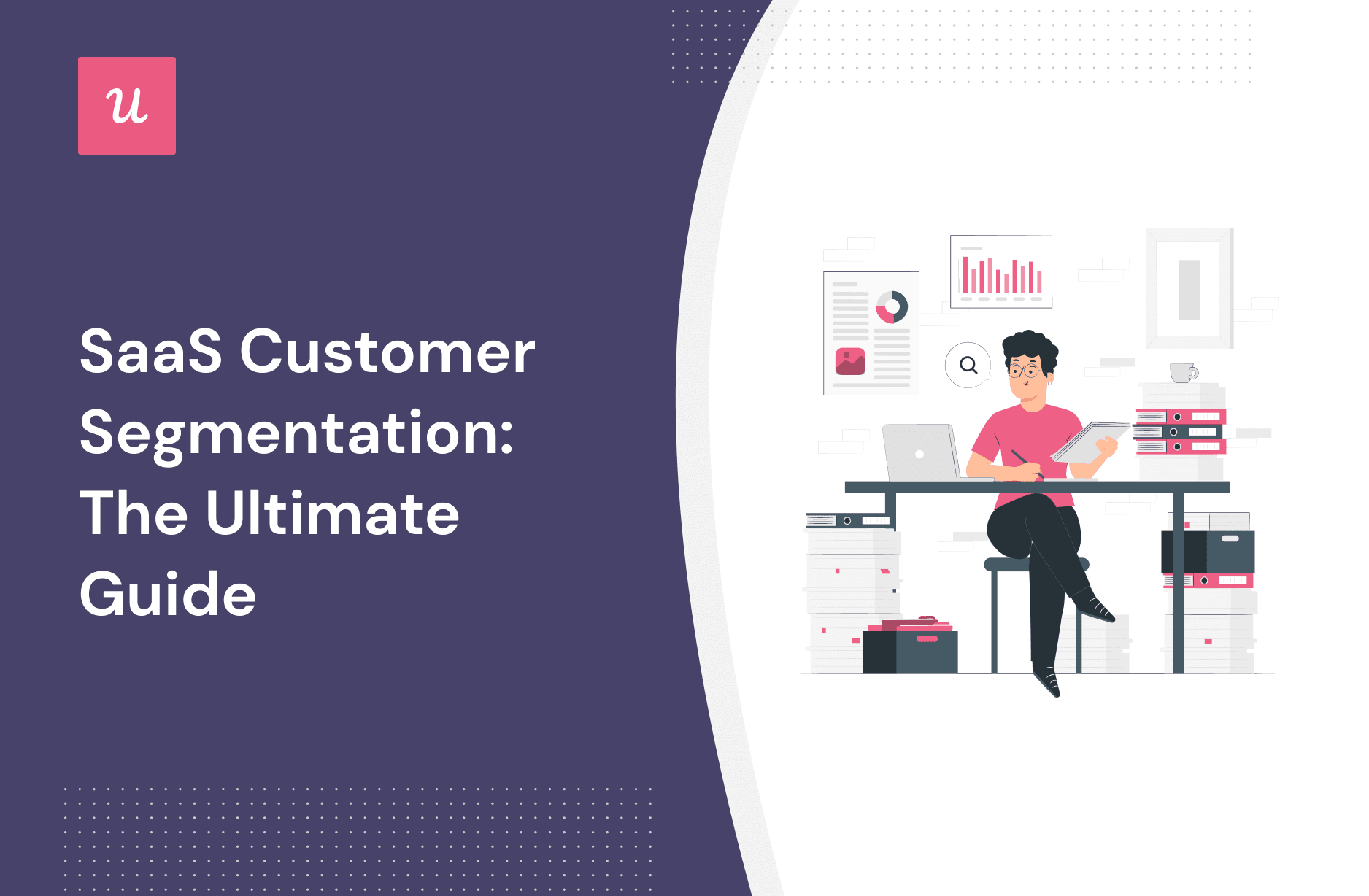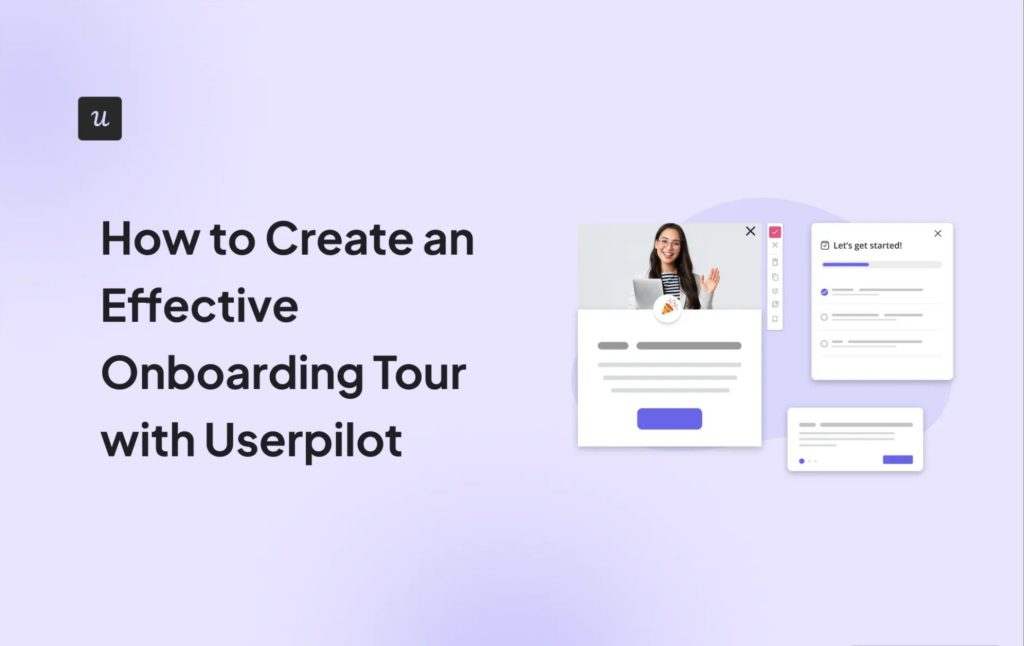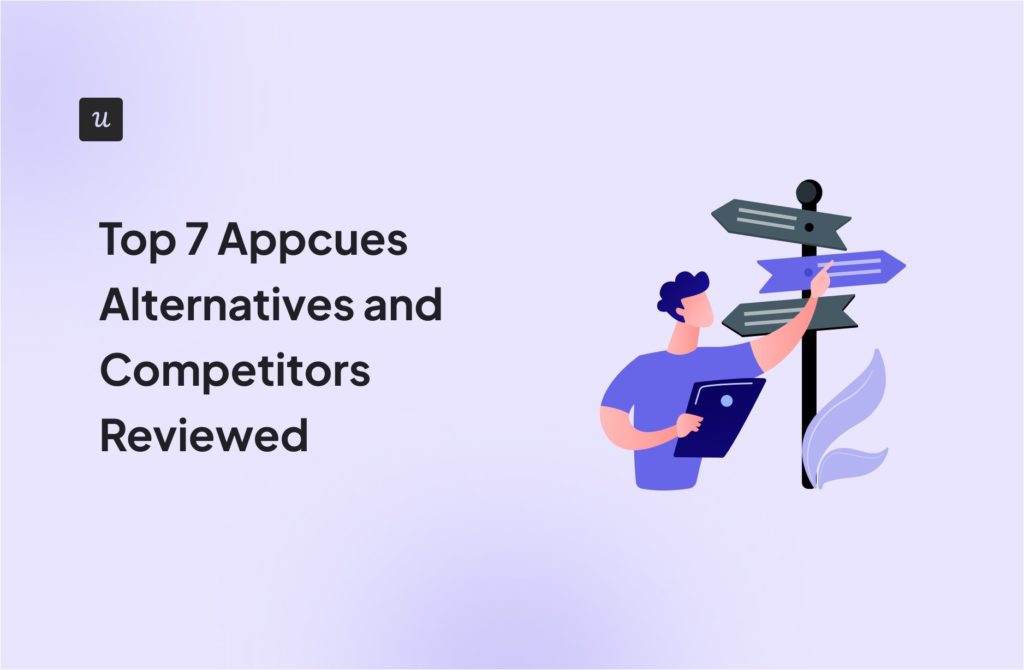
Get The Insights!
The fastest way to learn about Product Growth, Management & Trends.
What is SaaS customer segmentation?
Your customers are what makes your business, but you can’t paint them with a broad brush.
Segmentation is dividing a market or service based on common characteristics.
So, customer segmentation comes down to defining the different groups of your customer base.
These customer segments can be as straightforward or as complex to fit what you are trying to understand.
- Are you looking to apply specific messaging to new customers of a particular geographic region?
- Or are you trying to re-engage customers who have used all of your core features but haven’t logged in for seven days?

Both are valid customer segments that will influence your revenue but require different issues to address.
For geographic regions, you want to focus on localization and cultural awareness, while for disengaged customers, you want them to rediscover the value of your product.
The worst thing you can do is have a generic customer engagement policy that doesn’t address each customer segment’s needs.
Most importantly, you need to be capable of deciding which customers hold the most value and require the most investment.
If you do conduct customer segmentation successfully, it may be hard to say goodbye to a specific group, but it is a critical part of your growth.
Let’s dive deeper into what customer segmentation can mean not only from a revenue perspective but also for survival in a crowded market.
Why is SaaS customer segmentation important?
There are multiple ways to look at the benefits of customer segmentation but it’s crucial for a number of important reasons as follows:
- Customer segmentation allows SaaS companies to group users based on shared characteristics, behaviors, or needs. This enables personalized marketing and messaging, tailoring communications to specific customer segments, which increases relevance and engagement.
- Understanding different customer segments helps SaaS businesses identify distinct needs and pain points. This data informs product development, allowing companies to build features and solutions that address specific segment requirements
- By segmenting users, a SaaS business can identify at-risk customers or high-value segments. This enables targeted retention efforts, such as personalized support or tailored product recommendations.

Types of customer segmentation in SaaS
Before you identify new segments in your customer base, you should understand the 6 methods of segmentation so you can create a customer segmentation strategy.
Demographic segmentation
- The key variables are customer demographic traits such as industry, role, company size, geographic region, age, or gender.
- This data is either publicly available, or collected by sign-up forms, or welcome screens.
- This is usually the first step in segmentation for many companies since the data is readily available. However, it assumes customers who have the same traits also have the same expectations/needs.

Firmographic segmentation
- Firmographic segmentation is the counterpart of demographic segmentation in the B2B SaaS context. The key variables are properties like the industry, size, number of employees, or revenue.
- Just like demographic segmentation, it’s used to tailor products to specific needs and optimize marketing messaging to resonate with the target audience.

Need-based segmentation
- The key variables are desired outcomes, pain points, goals, and the job that needs to be done.
- This data can be found through market research, customer success/sales calls, and customer interviews.
- This method helps align your organization to the specific use case of a customer segment. It will not point you to the exact value of that segment.
Value-based segmentation
- The key variables are economic potential, existing ARR vs. whitespace ARR, product adoption rates, customer LTV, MRR, and Churn rates.
- This data can be found through your revenue analytics, sales reporting, and accounting.
- The method is essential for understanding which segments are important to nurture and grow. It also helps understand which segments are closest to churn/no longer hold the same value.
Speaking of product adoption:
These segmentation methods are helpful but are the most insightful when they are combined to create detailed customer segments.
For example, knowing a customer segment based on their company size, use case, and LTV is much more informative than only segmenting based on age and gender.
The next step to effective customer segmentation is understanding their behavior through your product analytics.
Psychographic segmentation
- The key variables are psychological characteristics like personality traits, lifestyle, social class, attitudes, values, and beliefs.
- You can collect this type of data using in-app surveys, conducting customer interviews, etc.
- This type of segmentation helps organizations understand the motivations that drive their behaviors, buying patterns, or preferences. Consequently, they can create more accurate user personas, develop better products, and optimize their positioning and differentiation strategies.
Technographic segmentation
- The key variables are technical data such as the device type they use, the platform or operating system, or their browser.
- You can collect such data by using analytics tools that track device types, operating systems, and browsers used by your customers
- Understanding what technology users use to consume the product or content allows teams to optimize their user experience and enhance product usability. For example, you could optimize the visuals or app navigation so that mobile users can easily use it.

How to collect data for customer segmentation in SaaS?
To effectively segment your customers, you need to gather and analyze relevant data that provides insights into their behaviors, preferences, and characteristics. Here are some methods to collect such data.
Collect customer data using welcome screens
Collecting customer data using welcome screens refers to the practice of gathering information from users when they first sign up or log in. By incorporating a welcome survey in your sign-up flow, you can gather information such as customers’ job roles, jobs to be done, and product use cases.
Disclaimer: The welcome survey below wasn’t built by Miro, it’s a simple hypothetical example to show how easy it is to use Userpilot’s Chrome extension to build a welcome survey.

Then you can leverage such information to deliver personalized experiences. This drives user engagement and satisfaction.
Monitor customer engagement with core features
Core features are the essential functionalities that define your product’s value proposition. These are the features that users rely on the most and contribute significantly to their experience.
Using a tool with a feature tag like Userpilot, you can track engagement with your core features and use feature usage data for further segmentation. It gives you insights into feature satisfaction and areas for improvement.

Use events to track customer behaviors
Customer behavior is such a critical element to effective segmentation because it lets you know how certain features or actions impact your conversion and retention rates.
The most effective way to track user behavior is by using events. These act as records of user activities that tell you how users use your product, how frequently, what’s most popular within your product, etc.
For example, Userpilot allows you to monitor user activities using tracked and custom events. You can track a single activity or activities in a group depending on your tracking goals.

User onboarding stage completion, free trial conversion, churn rate, and activation rates are all KPIs that will determine what events you want to track, how you decide to act upon your analysis, and what you are trying to improve.
With these KPIs in mind, along with your detailed customer segments and their product usage, you can create new segments such as:
- At risk of churn
- Low-value but high-maintenance customers
- Product Advocates/power users
Trigger in-app surveys to collect customer feedback
In-app surveys are also helpful when it comes to collecting customer feedback for segmentation. You can either use transactional or relational surveys:
- For transactional surveys, they are interaction-based and therefore they give you contextual insights into a specific user activity. For example, you can trigger a survey asking how content users are with the onboarding process.
- Relational surveys, on the other hand, are sent periodically. An example is the NPS survey which you can use its data to segment at-risk customers (detractors with an NPS of lower than 7) for targeted retention efforts.

How to segment your customers for your SaaS product?
Segmenting your customers for your SaaS product is a strategic process that involves several key steps to ensure you’re effectively targeting and catering to distinct user groups. Here’s how to go about it:
Define your customer segmentation goal
The first step in customer segmentation is to clearly define your objectives. Determine what you aim to achieve with insights from segmentation. It can be improving user engagement, tailoring marketing strategies, reducing churn, or enhancing the overall customer experience.
Different goals will require different types of data for segmentation, and therefore your data collection efforts should be tailored accordingly.
To ensure your goal is focused and measurable, you can use a goal-setting framework like SMART or OKR.

Collect customer segmentation data
Now that you have a goal in mind, you can try different data collection methods to collect input for your segmentation.
Keep in mind that successful customer segmentation requires a balanced approach. You should combine quantitative data (e.g., usage metrics, demographics) with qualitative data (e.g., user feedback, survey responses) to gain a holistic understanding of your customer base.
For example, if your goal is to improve user engagement, you should be collecting user engagement data such as feature usage, product usability feedback, etc.

Perform customer segmentation analysis to gain actionable insights
With collected input for segmentation, it’s time to analyze their user behavior for insights that you can leverage to achieve your goals.
What data you take a look at and what kinds of analysis you use depends on your objectives.
For example, if your objective is to reduce churn and retain more customers, your customer segmentation analysis might involve identifying patterns and commonalities among users who have churned.
You can analyze which features are most commonly used by customers who remain engaged over the long term. Then you should compare this with the feature adoption patterns of users who churn to determine if there are specific features that contribute to retention.

Examples of using SaaS customer segmentation to improve your customer experience
Ok, high-revenue customer segments? Identified. High potential customer segments found? Check. Customer segments that are wasting your time? Also, check.
What do you do with all this data so you can keep growing your product?
Create a personalized onboarding process for different segments
With collected data from welcome surveys, you can deliver personalized onboarding experiences for your customers. This will help increase adoption as customers are introduced to features relevant to their product or service use case.
For example, you can drive relevant feature discovery for different user segments using a combination of tooltips and interactive walkthroughs. You can also build an onboarding checklist to guide users through important tasks for experiencing product value.
Disclaimer: The tooltip below wasn’t built by Miro, it’s a simple hypothetical example to show how easy it is to use Userpilot’s Chrome extension to build a tooltip.

Trigger contextual in-app messages based on user behavior
Another option is setting up automated in-app messages, or customer success calls for customer segments that may be struggling with the app, haven’t signed in for a while, or haven’t adopted a feature that fits their use case.

These contextual messages show that you care about their progress and are there with them along their journey. Some other ideas are:
- Invite them to onboarding calls with your customer success team.
- Point them to the features that would improve their experience.
- Send an invitation to a webinar that goes over tips and tricks for your product.
Send upgrade invitations to drive growth
Finally, the most significant impact you can have on your revenue with customer segments is pushing bespoke messages to drive upsells.
Just look at this tactic from Grammarly.

It was specifically designed for highly active premium users to convert into business accounts and came just when you log in to take action.
You can also always develop a prompt when a customer in a low-tiered plan clicks a feature that isn’t part of their plan. In Asana they demonstrate the value of the features in a modal.

All you have to do is decide the customer segment you want to show the experience to and on which page.

Then create the experience that will appeal to them most, launch it, and see your conversion rates explode!
Conclusion
By drilling down and creating more detailed segments that include buyer personas, and product activity and are relevant to your KPIs, you can get a more complete picture of your customers.
This will prove essential as you determine which customer segments are most critical to your growth.
Want to segment your customer base and create personalized engagement flows for them with customer segmentation software? Then get a free Usepilot demo to get started right away.


![50+ Best User Onboarding Tools for SaaS [Updated for 2025 & Categorized] cover](https://blog-static.userpilot.com/blog/wp-content/uploads/2025/03/50-best-user-onboarding-tools-for-saas-updated-for-2025-categorized_50c8cd964d43b8851233b37c15ec9e73_2000-1024x670.png)


